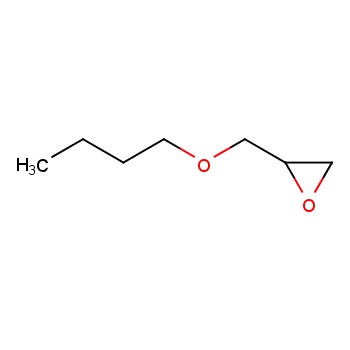Butyl glycidyl ether is a linear aliphatic monofunctional epoxy diluent, containing ether and epoxy groups in the molecule, with the advantages of low viscosity and good dilution effect; it participates in the curing reaction during curing, forming a homogeneous system, and is a commonly used active diluent for epoxy resins. It can be widely used in solvent-free insulating varnishes, epoxy potting materials, solvent-free epoxy floor coatings, and epoxy adhesives. The high epoxy value fraction can also be used as a modifying material for fatty amine, imidazole, and other amine curing agents.

Synthesis method
A synthesis method of Butyl glycidyl ether includes the reaction of butanol with epichlorohydrin to produce butyl chlorohydrin ether intermediate, and the closed-loop reaction of butyl chlorohydrin ether intermediate with sodium hydroxide to produce Butyl glycidyl ether. The catalyst used in the opening reaction is activated carbon-supported boron trifluoride catalyst, with a loading of 5-20% boron trifluoride. By using activated carbon-supported boron trifluoride catalyst to catalyze the reaction of butanol with epichlorohydrin, it shows high selectivity for the main reaction of the opening reaction, reduces the occurrence of side reactions, and produces Butyl glycidyl ether with high epoxy value and low organic chlorine content, good quality. In addition, the solid-phase catalyst has low corrosiveness to equipment, is easy to separate from the reaction product after the opening reaction, can be recycled after separation, and avoids environmental pollution.
The activated carbon-supported boron trifluoride catalyst refers to a solid-phase catalyst obtained by loading boron trifluoride on the outer surface of activated carbon. By using activated carbon-supported boron trifluoride catalyst to catalyze the reaction of butanol with epichlorohydrin, it shows high selectivity for the main reaction of the opening reaction, reduces the occurrence of side reactions, and produces Butyl glycidyl ether with high epoxy value and low organic chlorine content, good quality. In addition, the solid-phase catalyst has low corrosiveness to equipment, is easy to separate from the reaction product after the opening reaction, and can be recycled after separation to avoid environmental pollution. The butanol used can be n-butanol or isobutanol.
References
CN103145647A




